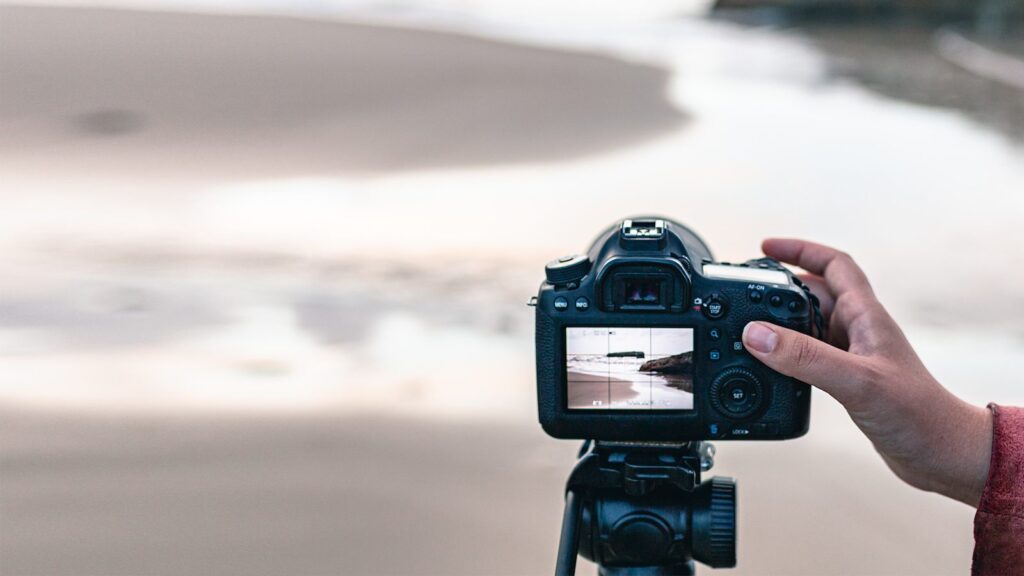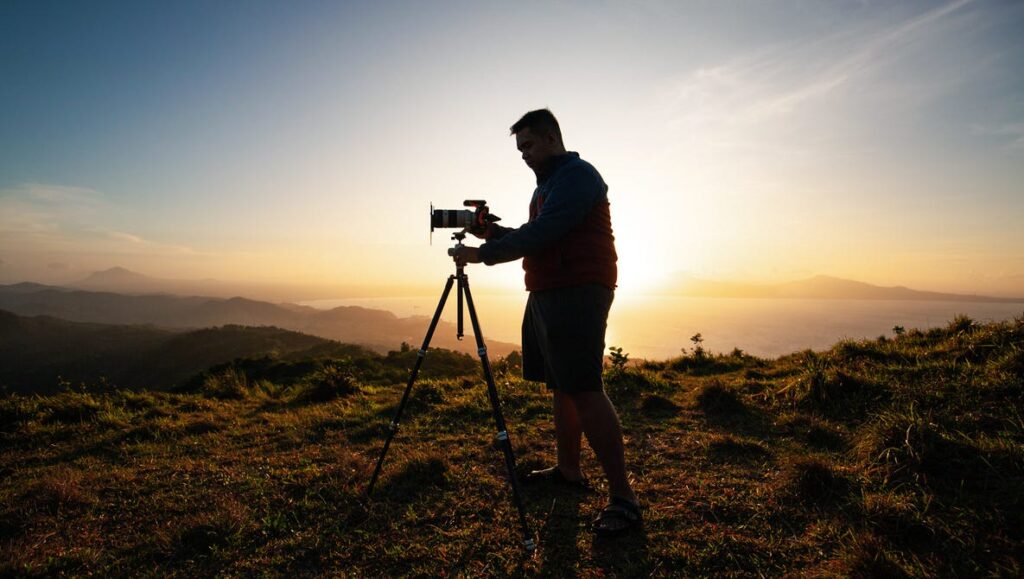Travel Photography
There’s more to travel photography than merely taking pictures of breathtaking scenery, far-off places, or energetic cityscapes. It all comes down to creating stories: tales that arouse feelings, pique curiosity, and offer an insight into the customs, civilizations, and natural settings of both distant and nearby locations. You have the ability to use your lens to tell stories that connect with audiences and give them a glimpse into the world from a different angle. This post will discuss how to elevate your trip photos above mere snapshots by using them to create fascinating stories.

1. The Power of Storytelling in Travel Photography
Fundamentally, photography storytelling is about catching moments that evoke a feeling of place, time, and emotion. A well-composed picture can take the spectator to the situation and give them the impression that they are a part of it. It may bring back memories, arouse wanderlust, or even start a conversation.

In contrast to other types of photography, travel photography frequently features a broad spectrum of themes, including people, street scenes, and landscapes and architecture. Every one of these components is important to the narrative you wish to convey. The trick is to figure out how to combine these disparate topics into a story that captures both the spirit of the location you’re shooting and your own experiences.
2. Understanding Your Subject
You must comprehend your subject before you can use your photos to convey a tale. Take the time to become fully immersed in the scene, whether you’re taking pictures of the untamed mountains of Patagonia, the tranquil temples of Kyoto, or the busy market in Marrakech.
Research Your Destination
It is essential to comprehend the geography, history, and culture of a place. Before you travel, do some research on the area to find the important locations, occasions, and customs you want to photograph. Find out about the regional traditions and, if you can, attempt to comprehend a few words in the local tongue. This not only facilitates deeper social interactions but also more accurately captures the spirit of the location.
Observe and Connect
Once you’re there, take some time to study your surroundings. Take note of the little things that you might miss, such the way light plays on a building’s façade, the way a tree casts shadows, or how people interact with one another. Frequently, the narrative conveyed by these minute elements is just as potent as the large-scale, famous pictures.
For taking pictures of individuals, establishing a rapport is essential. Talk to your subjects; find out about their experiences; be really interested. Intimate and genuine photos where the subject feels at ease and allows their personality to come through are frequently the result of this relationship.
3. Composing Your Story
Any great shot starts with composition, but with travel photography, composition also refers to how you arrange the components in the frame to convey a story.
Rule of Thirds and Beyond
Even though the rule of thirds is a tried-and-true compositional strategy, don’t be scared to try new things. Think about how altering the frame of an image might affect its narrative. For example, off-centering your subject might give the image movement or draw the viewer’s attention through the frame.
Leading Lines and Frames
Lead lines and organic frames can help draw the audience’s attention to the focal point of your narrative. Doorways, windows, or arches can function as frames, whereas roads, rivers, or architectural lines can function as leading lines. These methods serve to highlight the tale you’re trying to portray while also giving your image more depth.
Foreground, Middle Ground, and Background
Adding various objects to your image’s backdrop, middle ground, and foreground can help build layers within your narrative. For instance, in a landscape photograph, the combination of the mountains in the background, the hiker in the center ground, and the flower in the foreground tells a story of discovery and bonding with the natural world.
4. Capturing Emotion and Atmosphere
Capturing mood and feeling is one of the most potent parts of storytelling in photography. There are several ways to accomplish this.
Light and Mood
The light in an image has a big impact on its atmosphere. The soft, golden light of dawn or twilight can create a cozy, tranquil atmosphere, yet the bright midday sun can evoke a sense of intensity and vibrancy. Pay attention to the way the light interacts with your subject in your photos if you want to make them more emotionally impactful.
Candid Moments
The goal of candid photography is to record unplanned moments that showcase a subject’s or location’s genuine essence. Staged images lack the raw, authentic quality that these candid shots frequently possess. Honest moments may convey tremendous messages, whether they are captured in the laughter of children playing, the focused attention of a craftsman at work, or a fleeting expression of a bystander.
Cultural Symbols and Icons
Using images and symbols from various cultures into your photos gives your narrative a deeper level of significance. This could include anything from regional cuisine and architecture to traditional attire and religious symbols. These components aid in establishing your story inside the region’s unique cultural background.
5. The Role of Post-Processing
In travel photography, post-processing is an integral element of the storytelling process. Even though getting the greatest shot in-camera is crucial, post-processing lets you adjust your images to more effectively tell the story you want to tell.
Boosting Contrast and Colors
An image’s mood can be significantly altered by adjusting the contrast and color scheme. For example, bringing warmth and joy to the scene by making warm tones more saturated, or gloomy and contemplative, might be achieved by desaturating colors. However, exercise caution to avoid over-processing your photos to the detriment of their realism.
Reframing and Cropping
Occasionally, a small crop or reframe can enhance the composition and draw the viewer’s attention to the key plot points. Don’t be afraid to try with various crops to see how they impact the image’s overall story.
Photography in Black & White
Black and white photography has the ability to eliminate distractions and direct the viewer’s attention to the topic, textures, and shapes contained within the frame. Photographs in black and white are very good at capturing classic, dramatic, or reflective moments.
6. Curating a Narrative Series
Even while a single image can convey a lot of information, a collection of photos can offer a more thorough tale. When selecting a series of images, consider how each one adds to the larger narrative and how the images come together to form a coherent whole.
Selecting a Subject
There should be a distinct topic or plot in your series. This could be traveling from one place to another, experiencing a day in the life of a local, or delving into a specific facet of culture. The secret is to be true to your subject matter, style, and tone.
Flow and Sequencing
The sequence in which you display your photos might influence how the audience feels and understands the narrative. Think of beginning with a scene-setting establishing photo and then moving on to closer-up or more in-depth shots that tell the story in greater detail. The last picture ought to provide the spectator a feeling of closure or provoke thought.
7. Sharing Your Story
Sharing your vacation photos with others is the last step in using them to tell a story. Think about how your story will connect with your audience before deciding whether to distribute your photos through an exhibition, a photo essay, or social media.
Context & Captions
Giving your photos descriptions or background information might help the viewer comprehend the narrative better. An insightful caption might shed light on the relevance of a certain shot, provide context for the image, or provide a personal story that gives the story more substance.
Including Your Audience in Conversation
Invite viewers to contribute their thoughts on your photos in order to engage them. This not only starts a conversation about your work but also lets you know what feelings or ideas other people find resonant in your story.
Conclusion
Travel photography is an effective narrative medium. You may produce photographs that captivate audiences by comprehending your subject, meticulously planning your compositions, encapsulating mood and emotion, and carefully selecting your best photos. People from all across the world can be inspired, educated, and brought together by these stories. Thus, keep in mind that the next time you grab your camera, you’re using it to convey stories rather than merely snapping images.










Leave a Reply